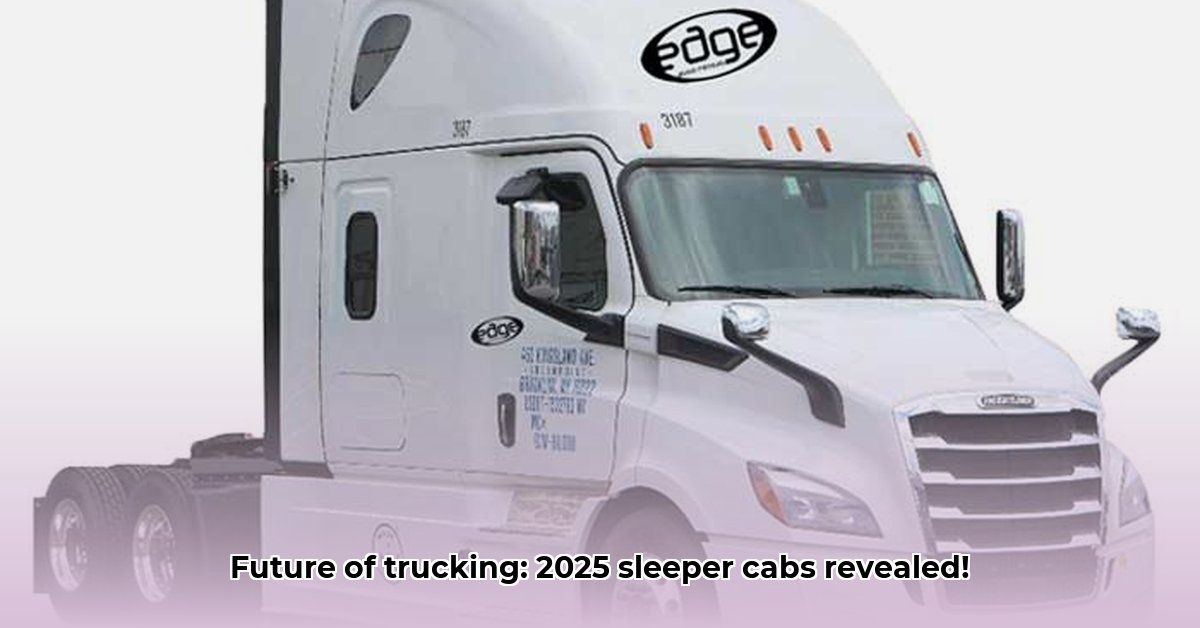
Sleeper Tractor Evolution: 2025 and Beyond
The humble sleeper cab has transformed from a cramped box into a surprisingly comfortable mobile home on wheels. Let's explore its journey and future trajectory. For more on agricultural vehicle evolution, check out this Kubota Tractor info.
From Closet to Cozy Cabin: A History of Sleeper Cab Innovation
Early sleeper cabs were notoriously cramped, barely sufficient for a driver to stretch out. However, evolving driver needs and stricter regulations from the Department of Transportation (DOT) fueled significant improvements. The demand for enhanced driver comfort and well-being spurred major design changes, transforming today's sleeper cabs into spaces rivaling small apartments or even tiny RVs.
Modern Marvels: The Next Generation of Sleeper Tractors
What sets today's sleeper cabs apart? Several key factors contribute to their enhanced functionality and comfort.
First, increased cab size provides more living space, a crucial upgrade for long-haul drivers. This translates to a more comfortable and less stressful experience for drivers spending extended time on the road.
Second, advanced technology takes center stage. Advanced driver-assistance systems (ADAS) – including automatic emergency braking, lane departure warnings, and adaptive cruise control – are becoming increasingly common. These features not only improve safety but also mitigate accidents caused by driver fatigue, a major concern in the trucking industry. Isn't enhanced driver safety a crucial factor in ensuring both driver and company well-being?
Third, enhanced comfort features are now standard in many models. Climate control, refrigerators, microwaves, and entertainment systems are commonplace, turning the cab into a mobile home office, entertainment center, and personal sanctuary.
Finally, extensive personalization options allow drivers to customize their cabs, creating a mobile workspace and living space tailored to their needs and preferences.
Regulations: Shaping the Future of the Sleeper Cab
DOT regulations concerning driver hours-of-service significantly impact sleeper cab design. These rules influence cab size (larger cabs allow for more legal rest time) and the integration of safety features. Compliance is critical for trucking companies to avoid substantial fines. These regulations will undoubtedly continue shaping future innovations in sleeper cab technology.
What's on the Horizon? Trends and Predictions for the Future
Looking ahead to 2025 and beyond, several key trends are shaping the future of sleeper cabs:
- Sustainability: Manufacturers are increasingly focusing on eco-friendly materials and fuel-efficient designs.
- Advanced Technology: AI-powered features, like sophisticated driver fatigue detection systems, are anticipated.
- Enhanced Telematics Integration: This will allow for remote monitoring and improved fleet management.
- Driver Comfort: Customization options will continue to expand, prioritizing driver well-being. Some experts even predict increased integration with smart home technologies.
Comparing Cost-Benefit of Sleeper Truck Upgrades for Driver Retention
Key Takeaways:
- Upgrading a daycab to a sleeper cab significantly boosts driver retention due to improved comfort and rest. However, the initial cost is substantial.
- Total costs encompass the sleeper unit, labor, potential frame modifications, and electrical system integration.
- Pre-modification assessments are crucial to prevent unexpected expenses.
- A thorough cost-benefit analysis needs to weigh enhanced driver retention (reduced turnover costs, improved driver morale, increased productivity) against the initial investment.
- Exploring pre-fabricated sleeper units and obtaining multiple quotes from mechanics helps minimize costs.
The High Cost of Comfort: Sleeper Cab Retrofits
Converting a daycab to a sleeper cab is a significant investment. While a used sleeper unit might cost around $1,000, installation and associated costs can easily double or triple this amount. Thorough planning is critical, much like planning a home renovation project.
Pre-Retrofit Considerations: A Necessary Step
Before initiating any retrofit, a professional assessment of the truck's suitability is essential. This assessment will determine whether the truck can structurally support a sleeper cab and identify potential issues that might inflate costs.
Sleeper Cab Selection: Quality vs. Cost
Selecting the appropriate sleeper unit is crucial. While a used sleeper unit offers lower initial costs, it might entail higher maintenance expenses down the line. New, pre-fabricated units, although more expensive initially, often offer superior integration and long-term reliability.
Weighing the Investment: Cost vs. Retention
The ultimate decision hinges on a cost-benefit analysis, considering the long-term return on investment. Driver turnover is costly; a comfortable sleeper cab can reduce it, leading to increased productivity and profitability.
Action Plan: Minimizing Costs & Maximizing Returns
- Professional Assessment: Obtain a comprehensive evaluation of your truck's suitability for a sleeper cab retrofit.
- Multiple Quotes: Secure detailed quotes from different mechanics to compare pricing and services.
- Sleeper Unit Selection: Carefully consider the trade-offs between cost, quality, and ease of installation.
- Phased Approach: Consider a phased approach, separating electrical work and sleeper installation.
- Ongoing Maintenance: Budget for regular sleeper cab maintenance.